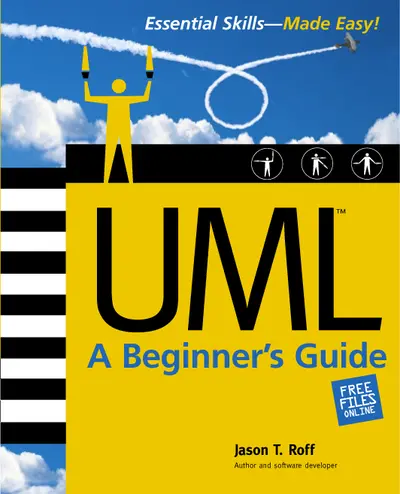My Account Details

ISBN10: 0072224606 | ISBN13: 9780072224603

Step 1 . Download Adobe Digital Editions to your PC or Mac desktop/laptop.
Step 2. Register and authorize your Adobe ID (optional). To access your eBook on multiple devices, first create an Adobe ID at account.adobe.com. Then, open Adobe Digital Editions, go to the Help menu, and select "Authorize Computer" to link your Adobe ID.
Step 3. Open Your eBook. Use Adobe Digital Editions to open the file. If the eBook doesn’t open, contact customer service for assistance.
Publisher's Note: Products purchased from Third Party sellers are not guaranteed by the publisher for quality, authenticity, or access to any online entitlements included with the product. Essential skills for first-time programmers! This easy-to-use book explains the fundamentals of UML. You'll learn to read, draw, and use this visual modeling language to create clear and effective blueprints for software development projects. The modular approach of this series--including drills, sample projects, and mastery checks--makes it easy to learn to use this powerful programming language at your own pace.
1: UML Fundamentals 2: Use Case Diagrams 3: Introduction to Object-Oriented Design 4: Workflow Modeling with Activity Diagrams 5: Modeling Behavior with Sequence Diagrams 6: Defining Domain Models Using Class Diagrams 7: Collaboration Diagrams 8: Further Explanation of Class Diagrams 9: Further Explanation of Sequence Diagramming 10: Modeling Behavior with Statechart Diagrams 11: Architecting with Implementation Diagrams 12: Using the Object Constraint Language A: Answers to Mastery Checks
3: Introduction to Object-Oriented Design 4: Workflow Modeling with Activity Diagrams 5: Modeling Behavior with Sequence Diagrams 6: Defining Domain Models Using Class Diagrams 7: Collaboration Diagrams 8: Further Explanation of Class Diagrams 9: Further Explanation of Sequence Diagramming 10: Modeling Behavior with Statechart Diagrams 11: Architecting with Implementation Diagrams 12: Using the Object Constraint Language A: Answers to Mastery Checks
5: Modeling Behavior with Sequence Diagrams 6: Defining Domain Models Using Class Diagrams 7: Collaboration Diagrams 8: Further Explanation of Class Diagrams 9: Further Explanation of Sequence Diagramming 10: Modeling Behavior with Statechart Diagrams 11: Architecting with Implementation Diagrams 12: Using the Object Constraint Language A: Answers to Mastery Checks
7: Collaboration Diagrams 8: Further Explanation of Class Diagrams 9: Further Explanation of Sequence Diagramming 10: Modeling Behavior with Statechart Diagrams 11: Architecting with Implementation Diagrams 12: Using the Object Constraint Language A: Answers to Mastery Checks
9: Further Explanation of Sequence Diagramming 10: Modeling Behavior with Statechart Diagrams 11: Architecting with Implementation Diagrams 12: Using the Object Constraint Language A: Answers to Mastery Checks
11: Architecting with Implementation Diagrams 12: Using the Object Constraint Language A: Answers to Mastery Checks
A: Answers to Mastery Checks
Need support? We're here to help - Get real-world support and resources every step of the way.